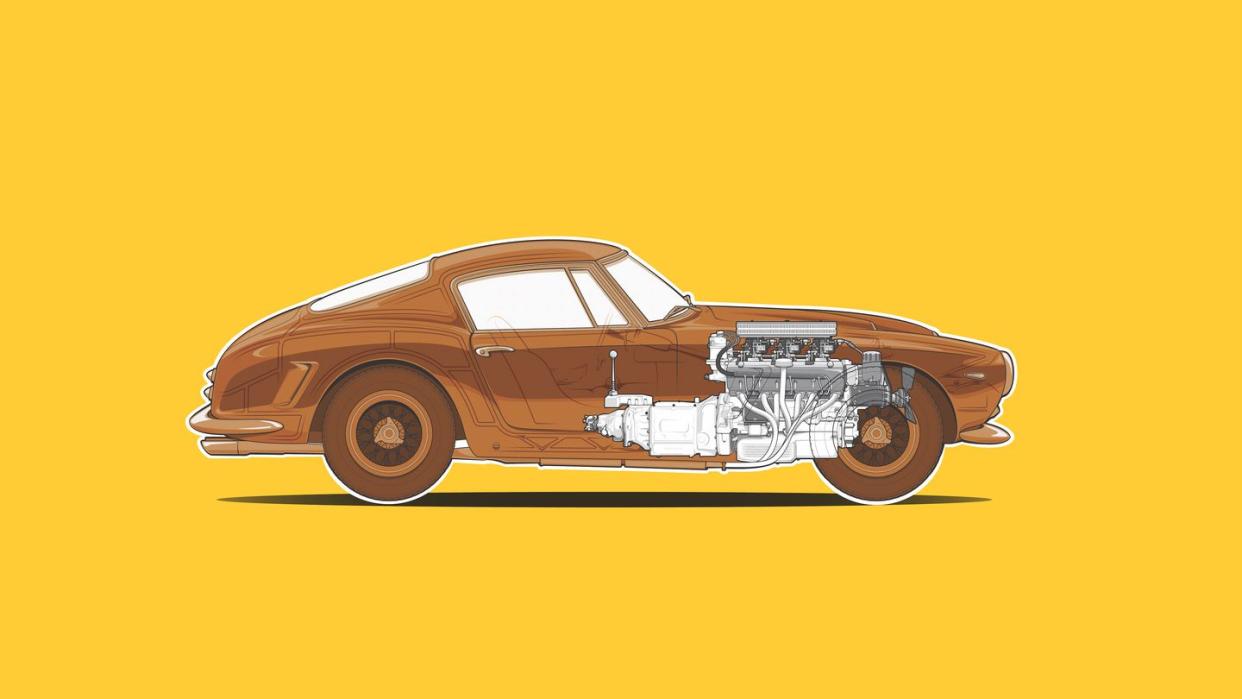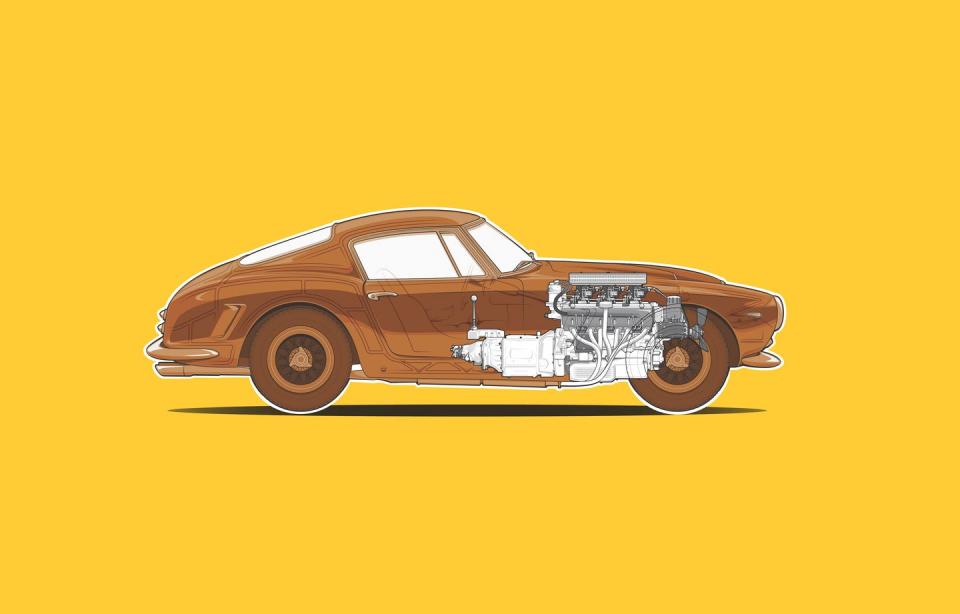The Engine That Makes the Ferrari 250 SWB

- Oops!Something went wrong.Please try again later.

It takes quite a thing to outshine the Ferrari 250 GT SWB, and that thing is the Colombo V-12 stationed under its long hood. This engine’s importance to Ferrari is difficult to overstate, as it played a headlining role in transforming the fledgling racing concern into one of the most storied automakers in history. The Colombo V-12 is the heart of Ferrari, full stop.
This story originally appeared in Volume 22 of Road & Track.
Before the 250 GT SWB debuted in 1959, its V-12 had already claimed victories in numerous grands prix, the 24 Hours of Le Mans, and other endurance races at the top levels of motorsport. Variants of this engine propelled Ferrari’s first race car and first road car, ultimately going on to power various roadgoing and racing Ferrari models for 41 years.
Engine designer Gioacchino Colombo’s 12-cylinder creation was lightweight, sporting an aluminum crankcase and heads. It had an appetite for revs that was unusual for the time, with one overhead camshaft per bank driving two valves per cylinder.
But crucially, it had room to grow. Colombo had the foresight in 1945 to design the V-12 with an almost comically wide 90-mm cylinder spacing, which provided significant latitude to expand its displacement and valve diameters down the road. And expand it did. The original 1.5-liter version’s 55-mm bores grew to 73 mm for the 3.0-liter version that powers 250 models and finally to 77 mm for cars that followed. The Colombo V-12 later maxed out at 4.9 liters, aided by a stretch in cylinder spacing to 94 mm. The engine’s flexibility in displacement and states of tune was instrumental to Enzo Ferrari’s success in selling road cars to well-heeled customers. Road-car sales made Enzo’s motorsport endeavors possible. A racing-pedigreed V-12 made both of those things possible.

The Colombo V-12’s fundamentally robust architecture also enabled constant evolution. By the time the 250 GT SWB rolled around, Ferrari engineers had developed a bewildering array of configurations of the engine and its ancillaries, a testament to the powerplant’s inherent versatility. Vintage-Ferrari restorer Donnie Callaway points to this quality as the key to its greatness: “With a Chevy small block, you can bolt on and bolt off performance, and these [Ferrari] guys were really ahead of their time. [Colombo’s V-12] is so tunable in every respect. ‘We’re gonna do Le Mans.’ Okay, tune it like this. ‘We’re gonna do Mulholland every day with a schoolteacher mom.’ Okay, tune it for this. It’s easy and adaptable.”
In 250 guise, the Colombo V-12 really hit its stride. Its 2953-cc displacement slotted it neatly into sub-3.0-liter classes of sports-car racing, where it went on to win everything in sight, reaching its apogee in one of the most iconic and valuable cars in history, the 250 GTO—in case you needed any more convincing about the Colombo V-12’s greatness.

A car-lover’s community for ultimate access & unrivaled experiences.JOIN NOW Hearst Owned
You Might Also Like

